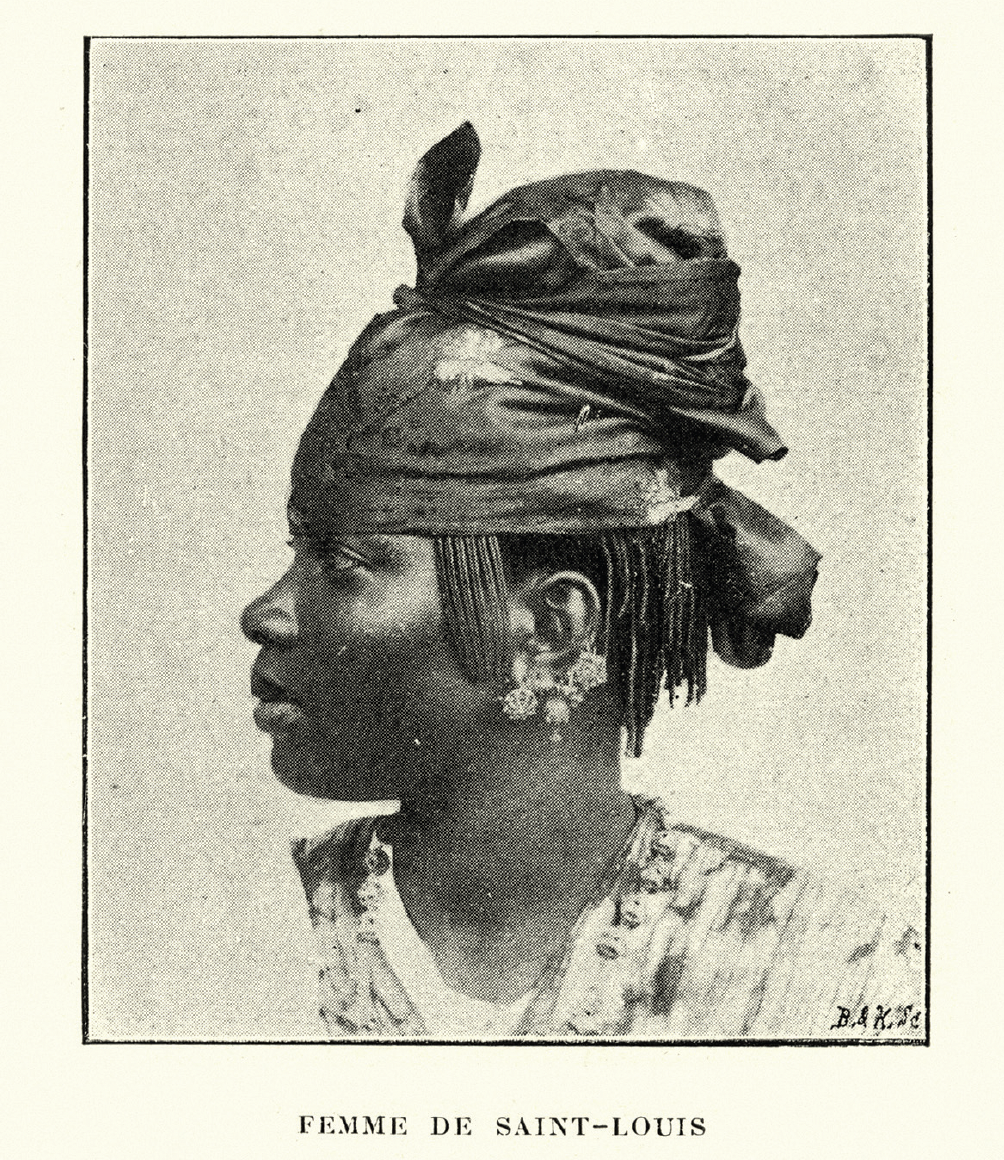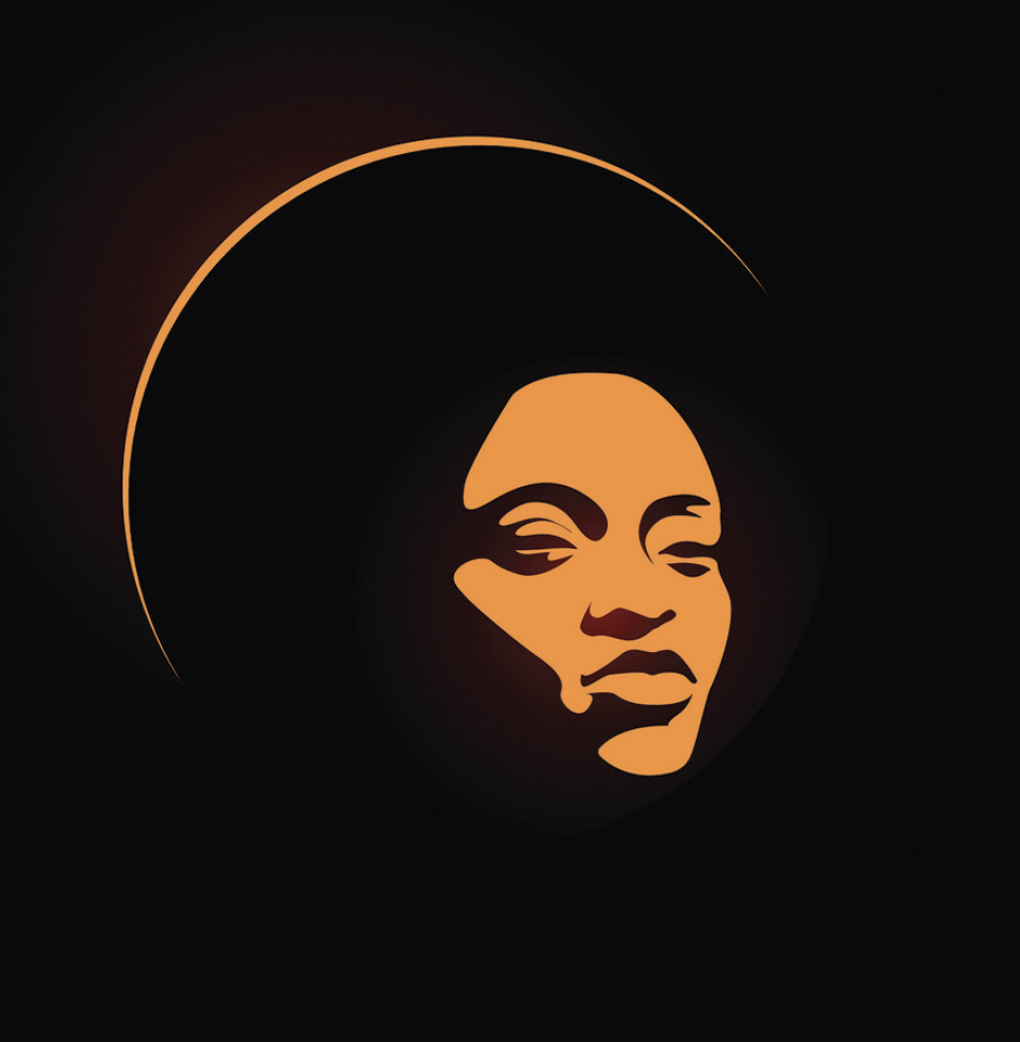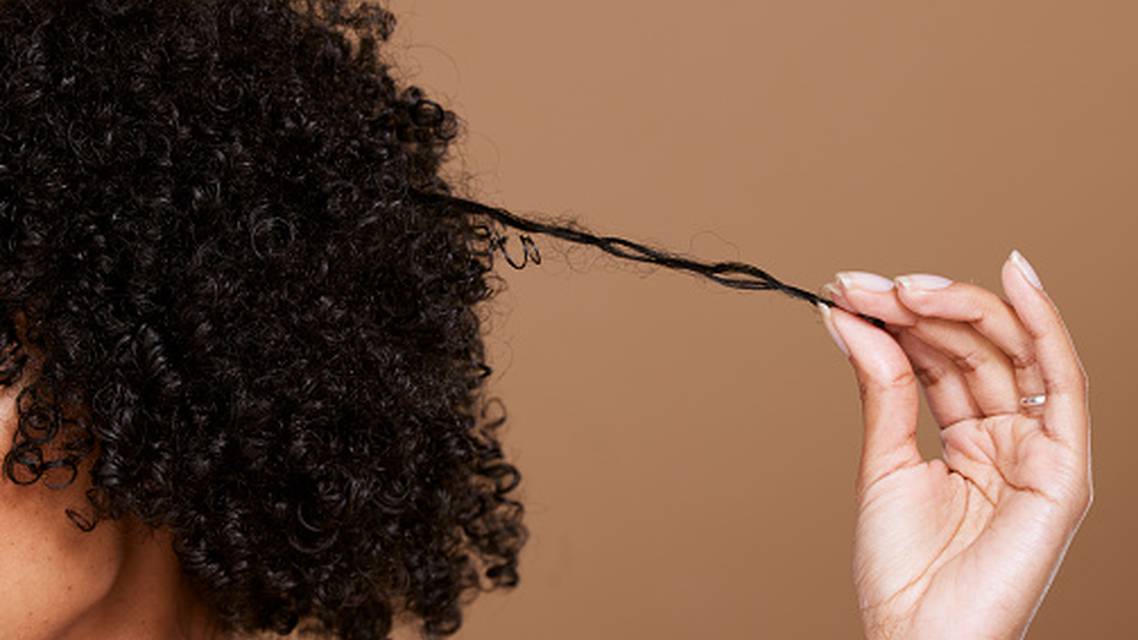Hair and scalp disorders are one of the most common conditions for which Black patients seek dermatologic care.¹ Despite this, many Black patients perceive their dermatologist as having a lack of knowledge of Black hair.² The history of African American hair is unique and has served as a symbol of empowerment, oppression, and resistance. It has directly influenced the current hairstyles worn by the Black community in the United States today. To practice with cultural competency in the care of Black patients, dermatologists must be knowledgeable about this history. In this article, we discuss what every dermatologist must know about the history of Black hair, from pre-colonial Africa to the present day, and how this history influences current Black hairstyles.

A native chief (Congo region) with a braided hairstyle.
Pre-Colonial Africa: Black Hair as a Symbol
In pre-colonial Africa, hairstyles were used as a method of communication. Hairstyles distinguished one’s status based on geographic origin, marital status, age, ethnic identity, religion, wealth, and rank in society.³ Amongst women, there was an emphasis on having thick, long, clean, and neat hair, usually in a braided style, to signify the ability to produce bountiful farms and bare healthy children.³ In Nigeria, if a woman’s hair appeared “undone,” it signified that they were depressed, dirty, or even insane.³ Hair was also used as a source of spiritual power. Amongst the Yoruba, for example, hair was seen as the most elevated part of the body, and braided hair was used to send messages to the gods.³ The Africans’ intricate hair styling process took hours to days to create and included washing, combing, oiling, braiding or twisting, and decorating the hair with cloth, beads, or shells. This hair care ritual was viewed as a social opportunity to bond with family and friends, and this tradition still holds true today.

A native woman of Senegal with hair styled into locs and adorned with a headwrap.
Slavery: The Altering of the Relationship With Black Hair
For more than 400 years, more than 15 million Africans were forcibly removed from their homes and sold into slavery in the transatlantic slave trade. One of the first things that slave traders did to enslaved Africans was shave their heads, an act intended to dehumanize and strip the enslaved of their African identity.³ Removed from their native land and forced into slavery, the enslaved no longer had access to the native tools, oils, or the time to care for their hair, resulting in it becoming matted, tangled, damaged, and hidden under scarves or kerchiefs.³ The Eurocentric beauty standard of straight hair resulted in enslaved Africans’ tightly coiled hair being negatively pathologized by the social and scientific community. This was internalized by the enslaved and they perceived their hair as ugly and inferior, a belief that unfortunately continues to be perpetuated generationally today. This belief was reinforced by slave masters who preferentially chose the enslaved Africans with European features of straight hair and lighter skin to be house slaves, giving them access to less physically demanding labor, hand-me-down clothes, better food, and education, while the enslaved with more African features of kinky hair and dark skin were required to be field slaves.³ A hierarchy amongst the enslaved was created in which straighter hair translated to economic opportunity and social advantage. This introduced the concept of texturism within the Black community, which is a preference for those with straighter hair texture (offensively referred to by the term “good hair”) and discrimination against those with kinkier or curlier textures (offensively referred to by the term “bad hair”). Because of the opportunities offered to those with European features, enslaved women used various hair straightening methods including slathering the hair with butter, bacon fat, or goose grease and then using a butter knife heated in a can over a fire to straighten their hair, wrapping the hair in string, nylon, cotton, or eel skin to decrease the kink and leave looser curls, or smearing lye on the hair, even though it often burned the scalp.³ Post emancipation, Blacks continued to maintain straight hairstyles using hot combs, flat irons, and lye-based chemical relaxers to help their assimilation into the Eurocentric society and secure economic opportunities.

Originating in Sub-Saharan Africa, the headwraps worn by women often indicated their age, marital status, and prosperity.
Civil Rights Movement: The Return of Pride in Black Hair
In the mid 1960s, during the Civil Rights Movement, Black hair in the United States underwent its biggest change since enslaved Africans were brought to the Americas. The afro, a hairstyle in which an African American’s naturally kinky/curly hair is styled in a rounded shape, became a symbol of Black pride and activism. Other popular hairstyles during this time included cornrows, braids, and the use of African-style headwraps. These natural hairstyles were more than a “look,” they served as a political statement and a way to embrace African American’s natural hair texture. To show political alliance, African Americans with naturally straighter hair would use methods including getting curly relaxers with perm rods and using home concoctions such as vinegar, beer, and Borax cleaner to make their hair curly enough to style into an afro.³ This signified a time when Black people wanted to honor their African roots and break free from the long-imposed Eurocentric standard of beauty by no longer straightening their hair.

The afro hairstyle.
Present Day: The Harmful Effects of Eurocentric Standards of Beauty
Current Black hairstyles, specifically amongst Black women, include but are not limited to naturally curly/kinky hair, chemically straightened hair, heat-straightened hair, braids, locs, and use of wigs and hair extensions such as weaves. Choice of hairstyle is influenced by personal preference, convenience, cost of maintenance, and lifestyle, however discrimination rooted in Eurocentric standards of beauty that originated during slavery continues to be a factor that impacts choice of hairstyle amongst Black women. A 2020 study⁴ found that in the workplace, Black women with natural hairstyles are more likely to be perceived as less professional and therefore less likely to gain employment compared to Black women with straightened hair. Additionally, 80% of Black women believe it is necessary to change their hair from its natural state to secure employment and meet social expectations at work, and Black women are 1.5 times more likely to be sent home from the workplace because of their hairstyle.⁵ Discrimination against natural hair in Black girls can start as young as five years old⁵, and many Black girls experience hair-related bullying and teasing from ages 10 to 15 years old that results in a decreased satisfaction with their natural hair.⁶ The CROWN Act,⁵ created in 2019 to protect against discrimination based on race-based hairstyles or hair texture has been signed into law, as of this writing, in 22 states and one US Territory, but has not yet been passed at the federal level.

Examples of natural hair styles worn in the African American community including braids, locs, and naturally curly/kinky hair. The CROWN Act was created to protect against discrimination based on race-based hairstyles or hair texture.
Eurocentric standards of beauty have also led to the use of harmful hair care practices that negatively affect the health of Black women. In a 2023 survey study⁷, Black respondents reported the most frequent ever use of chemical straighteners compared to other races, and 61% reported that they used chemical straighteners because they “felt more beautiful with straight hair.” Chemical straighteners, such as relaxers, contain harmful chemicals including parabens and phthalates that are associated with an increased risk of early puberty, uterine fibroids, and cancer.⁷ Use of chemical relaxers was encouraged by hair care companies displaying advertisements targeted towards Black women that used terms such as “straight,” “smooth,” and “silky” next to images of women with straight hair,³ perpetuating a negative perception of naturally curly hair amongst Black women. Black consumers spend nine times more on hair care products compared to other ethnic groups⁸, and hair care companies often take advantage of this by specifically marketing products to Black consumers,³ even if the products are damaging to the hair or contain harmful chemicals. Recently there has been a return of the natural hair movement amongst Black women (from 2017 to 2020 there was a 23% increase in Black women who prefer their natural hair texture⁸), and the significant purchasing power of the African American beauty product consumer has caused a decrease in the sales of chemical relaxers by 26% from 2010 to 2015⁸ and an increase in hair care products that are targeted towards the unique needs of naturally curly hair.
Another common hair care practice in the Black community includes the use of hairstyles that increase tension at the root of the hair follicle, such as the use of weaves where hair extensions are sewn or glued onto cornrows (a style of braiding in which the hair is braided very closely to the scalp). These hair extensions hide natural hair, are often straight, and may be inappropriately referred to as protective styles when in fact they are not. Unlike chemical relaxers, the market for hair weaves is growing rapidly and is projected to reach a value of $5.9 billion by 2026.⁸ Both chemical relaxers and high-tension hairstyles increase the risk of dermatologic disorders such as traction alopecia, acquired trichorrhexis nodosa, and central centrifugal cicatricial alopecia, which all disproportionately affect Black women. Despite the harmful effects of these hair care practices, the social and economic advantages of having straight hair often make Black women feel like they have no other choice in hairstyle.
Conclusion
The complicated history of Black hair reflects the origins of the diverse range of hairstyles worn in the Black community and provides context for the historical and social factors that influence current choices of hairstyle amongst African Americans. Eurocentric standards of beauty have led to discrimination against natural Black hairstyles that negatively affects employment opportunities and social status, as well as frequent use of harmful hair care practices that contribute to hair and scalp disorders. It is imperative that dermatologists are knowledgeable about the historical, cultural, and social significance of Black hairstyles. Having this understanding may reduce implicit bias amongst dermatologists, as a physician without this historical knowledge or understanding may be more likely to place blame and judgment on the patient, view the patient as non-compliant, or not offer proper treatment if a patient persistently wears a hairstyle that is damaging to the hair and/or scalp. It would also allow a dermatologist to have a better understanding of a patient’s choice of hairstyle, foster a trusting relationship with the patient, and engage in cultural competence, leading to greater patient satisfaction, improved patient adherence to the treatment plan, and improved health outcomes for this patient population.⁹
Disclosures: Brooke Jackson, MD, FAAD, and Aliya Rodriguez, BS, have no relevant financial disclosures.
1. Gaulding JV, Gutierrez D, Bhatia BK, et al. Epidemiology of skin diseases in a diverse patient population. J Drugs Dermatol. 2018;17(10):1032-1036. PMID: 30365582.
2. Gorbatenko-Roth K, Prose N, Kundu RV, Patterson S. Assessment of black patients’ perception of their dermatology care. JAMA Dermatol. 2019;155(10):1129-1134. doi:10.1001/jamadermatol.2019.2063
3. Byrd AD, Tharps LL. Hair Story: Untangling the Roots of Black Hair in America. St. Martin’s Press; 2014.
4. Koval CZ, Rosette AS. The natural hair bias in job recruitment. Soc Psych Personal Sci. 2020;12(5):741-750. doi:10.1177/1948550620937937
5. The Official CROWN Act. Accessed July 3, 2023. https://www.thecrownact.com/home.
6. Henning T, Holman M, Ismael L, Yu KY, Williams L, Shelton SJ, Perez M. Examination of hair experiences among girls with Black/African American identities. Body Image. 2022;42:75-83. doi:10.1016/j.bodyim.2022.05.009.
7. Edwards L, Ahmed L, Martinez L, et al. Beauty inside out: examining beauty product use among diverse women and femme-identifying individuals in northern Manhattan and south Bronx through an environmental justice framework. Environmental Justice. doi:10.1089/env.2022.0053
8. Black hair industry statistics and trends in 2023. GITNUX. May 20, 2023. Accessed July 3, 2023. https://blog.gitnux.com/black-hair-industry-statistics
9. McKesey J, Berger TG, Lim HW, McMichael AJ, Torres A, Pandya AG. Cultural competence for the 21st century dermatologist practicing in the United States. J Am Acad of Dermatol. 2017;77(6):1159-1169. doi:10.1016/j.jaad.2017.07.057
Recommended
- The Practical Dermatology Podcast
Time Is Hair: An Update on the Diagnosis and Treatment of Scarring Alopecias in Patients with Darker Skin Tones










